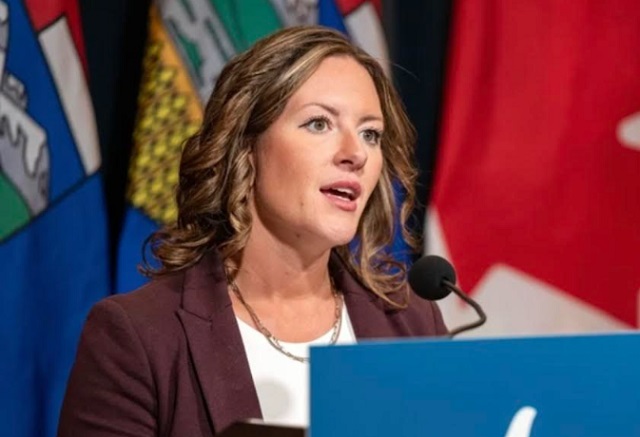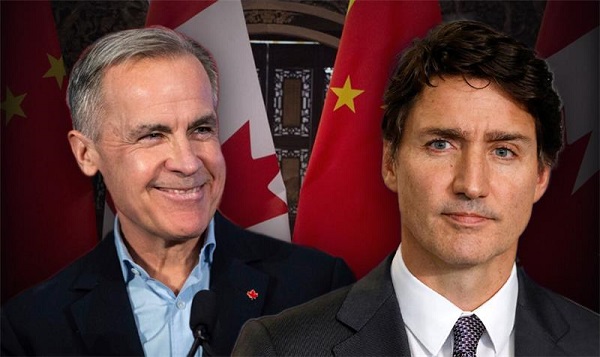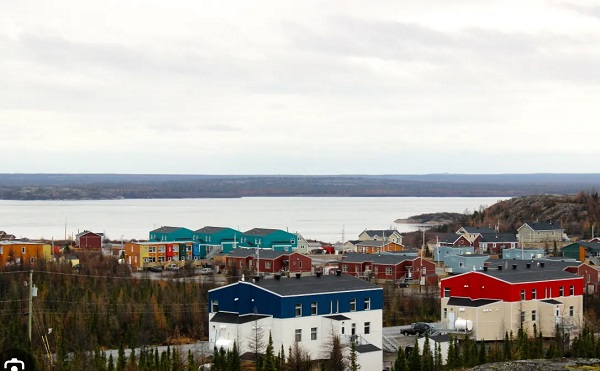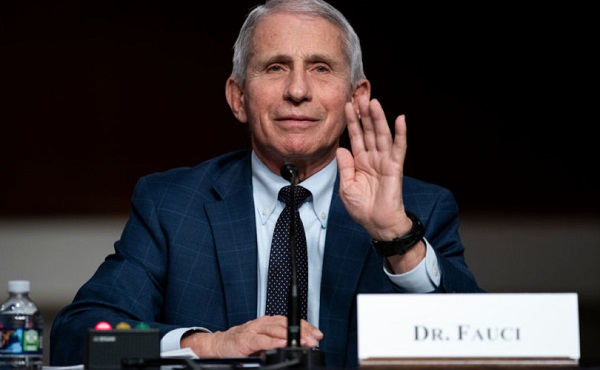Alberta
Emissions cap “will not be tolerated in Alberta” – Letter to Environment Minister Guilbeault

Dear Minister Steven Guilbeault,
The federal government’s draft Regulatory Framework to Cap Oil and Gas Sector Greenhouse Gas Emissions represents a de facto production cap on Alberta’s oil and gas sector. This cap is not realistic or effective, will not achieve its grandiose emissions targets, and will not be tolerated in Alberta.
Today, Alberta is efficiently and effectively regulating and driving emissions from all industrial sectors, including oil and gas, and has been doing so successfully for decades. Our technical submission outlines how your proposed oil and gas emissions cap will undercut this work, and the severe consequences that it will impose on Albertans and all Canadians.
In no way does Alberta’s technical submission alter our province’s position that the proposed emissions cap is unconstitutional. As set out in Section 92A of the Constitution Act, 1867, Alberta has exclusive jurisdiction to manage the rate of non-renewable natural resources production and operational aspects of their development in our province.
If implemented, this cap would have a devastating impact on the economies of Alberta and all of Canada. Analysis from the Conference Board of Canada shows that it would reduce Canada’s GDP by up to $1 trillion between 2030 and 2040 and create up to 151,000 lost jobs across Canada by 2030. Oil and gas production would be curtailed, tens of thousands could be out of work, and the economic impact would be felt from coast to coast.
We have identified an overwhelming number of flaws in your government’s proposed framework. For example, your assumed production forecasts – which form the basis of the cap – are from 2019. Alberta’s total oil and natural gas production has already risen past 2019 levels, and multiple forecasts project oil sands production to increase significantly by 2030. Similarly, the technologies needed to massively abate emissions in the oil and gas sector either don’t yet exist or aren’t being developed at the rate and scale that your modelling requires.
Many of these technologies and investments are supported by Alberta and will eventually deliver real and sustained reductions, but not by 2030. As well, our submission clearly demonstrates that:
• The proposed cap would violate Section 92A of the Constitution, and result in oil and gas production cuts and shut-ins in Alberta.
• It is based on a flawed regulatory framework and policy design that is ineffective, inefficient and will not produce the intended emission reductions.
• The proposed cap will negatively impact Alberta’s economy, as well as the economies of provinces and territories across the country, including the Canadian economy overall.
• It will undercut Canada’s competitiveness and drastically reduce investments in clean technologies like carbon capture, which are critical to meaningfully reducing emissions in the coming years.
• It is unnecessary and will undermine effective provincial-led decarbonizing approaches and initiatives already underway or proposed in Alberta and across Canada.
• It will lead to carbon leakage, with oil and gas production and greenhouse gas emissions increasing in other countries with less robust environmental and human rights standards.
Alberta is confident that the many of issues raised in this document are shared by other provinces and industry leaders, both within the oil and gas sector and beyond.
All greenhouse gas emissions have the same global impact, regardless of the sector or region in which they are produced. Instead of pursuing this unconstitutional cap, we are calling on your government to immediately halt further development and begin meaningful collaboration within established provincial regulatory regimes on oil and gas regulation and emissions reductions.
Alberta would welcome federal investment to help the oil and gas industry – and other industries – advance and adopt technology to reduce emissions to support our goals of carbon neutrality by 2050.
Alberta aspires to achieve a carbon neutral economy without compromising affordable, reliable, and secure energy for Alberta, Canada and the world. We know this relies on and requires investment to advance clean technology solutions.
We invite you to join us in implementing our Emissions Reduction and Energy Development Plan to achieve carbon neutrality while continuing the development of Alberta’s world-class natural energy resources for Canada and the world.
Sincerely,
Rebecca Schulz
Minister of Environment and Protected Areas
Alberta
Made in Alberta! Province makes it easier to support local products with Buy Local program

Show your Alberta side. Buy Local. |
When the going gets tough, Albertans stick together. That’s why Alberta’s government is launching a new campaign to benefit hard-working Albertans.
Global uncertainty is threatening the livelihoods of hard-working Alberta farmers, ranchers, processors and their families. The ‘Buy Local’ campaign, recently launched by Alberta’s government, encourages consumers to eat, drink and buy local to show our unified support for the province’s agriculture and food industry.
The government’s ‘Buy Local’ campaign encourages consumers to buy products from Alberta’s hard-working farmers, ranchers and food processors that produce safe, nutritious food for Albertans, Canadians and the world.
“It’s time to let these hard-working Albertans know we have their back. Now, more than ever, we need to shop local and buy made-in-Alberta products. The next time you are grocery shopping or go out for dinner or a drink with your friends or family, support local to demonstrate your Alberta pride. We are pleased tariffs don’t impact the ag industry right now and will keep advocating for our ag industry.”
Alberta’s government supports consumer choice. We are providing tools to help folks easily identify Alberta- and Canadian-made foods and products. Choosing local products keeps Albertans’ hard-earned dollars in our province. Whether it is farm-fresh vegetables, potatoes, honey, craft beer, frozen food or our world-renowned beef, Alberta has an abundance of fresh foods produced right on our doorstep.
Quick facts
- This summer, Albertans can support local at more than 150 farmers’ markets across the province and meet the folks who make, bake and grow our food.
- In March 2023, the Alberta government launched the ‘Made in Alberta’ voluntary food and beverage labelling program to support local agriculture and food sectors.
- Through direct connections with processors, the program has created the momentum to continue expanding consumer awareness about the ‘Made in Alberta’ label to help shoppers quickly identify foods and beverages produced in our province.
- Made in Alberta product catalogue website
Related information
Alberta
Province to expand services provided by Alberta Sheriffs: New policing option for municipalities

Expanding municipal police service options |
Proposed amendments would help ensure Alberta’s evolving public safety needs are met while also giving municipalities more options for local policing.
As first announced with the introduction of the Public Safety Statutes Amendment Act, 2024, Alberta’s government is considering creating a new independent agency police service to assume the police-like duties currently performed by Alberta Sheriffs. If passed, Bill 49 would lay additional groundwork for the new police service.
Proposed amendments to the Police Act recognize the unique challenges faced by different communities and seek to empower local governments to adopt strategies that effectively respond to their specific safety concerns, enhancing overall public safety across the province.
If passed, Bill 49 would specify that the new agency would be a Crown corporation with an independent board of directors to oversee its day-to-day operations. The new agency would be operationally independent from the government, consistent with all police services in Alberta. Unlike the Alberta Sheriffs, officers in the new police service would be directly employed by the police service rather than by the government.
“With this bill, we are taking the necessary steps to address the unique public safety concerns in communities across Alberta. As we work towards creating an independent agency police service, we are providing an essential component of Alberta’s police framework for years to come. Our aim is for the new agency is to ensure that Albertans are safe in their communities and receive the best possible service when they need it most.”
Additional amendments would allow municipalities to select the new agency as their local police service once it becomes fully operational and the necessary standards, capacity and frameworks are in place. Alberta’s government is committed to ensuring the new agency works collaboratively with all police services to meet the province’s evolving public safety needs and improve law enforcement response times, particularly in rural communities. While the RCMP would remain the official provincial police service, municipalities would have a new option for their local policing needs.
Once established, the agency would strengthen Alberta’s existing policing model and complement the province’s current police services, which include the RCMP, Indigenous police services and municipal police. It would help fill gaps and ensure law enforcement resources are deployed efficiently across the province.
Related information
-

 Alberta12 hours ago
Alberta12 hours agoProvince to expand services provided by Alberta Sheriffs: New policing option for municipalities
-

 Bruce Dowbiggin7 hours ago
Bruce Dowbiggin7 hours agoIs HNIC Ready For The Winnipeg Jets To Be Canada’s Heroes?
-

 2025 Federal Election9 hours ago
2025 Federal Election9 hours agoCSIS Warned Beijing Would Brand Conservatives as Trumpian. Now Carney’s Campaign Is Doing It.
-

 2025 Federal Election11 hours ago
2025 Federal Election11 hours agoNo Matter The Winner – My Canada Is Gone
-

 Alberta10 hours ago
Alberta10 hours agoMade in Alberta! Province makes it easier to support local products with Buy Local program
-

 Health8 hours ago
Health8 hours agoHorrific and Deadly Effects of Antidepressants
-

 2025 Federal Election2 days ago
2025 Federal Election2 days agoThe “Hardhat Vote” Has Embraced Pierre Poilievre
-

 COVID-192 days ago
COVID-192 days agoThe Pandemic Justice Phase Begins as Criminal Investigations Commence




